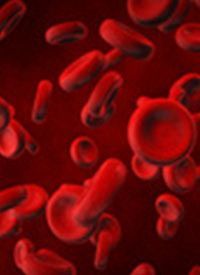Ixazomib/Daratumumab Elicits Encouraging Response in Elderly Frail Patients With R/R Multiple Myeloma
Ixazomib plus daratumumab without dexamethasone showed a positive efficacy profile for elderly frail patients with relapsed/refractory multiple myeloma, according to results of the phase 2 IFM 2018-02 study.

Ixazomib (Ninlaro) plus daratumumab (Darzalex) without dexamethasone showed a positive efficacy profile for elderly frail patients with relapsed/refractory multiple myeloma, according to results of the phase 2 IFM 2018-02 study (NCT03757221) presented at the 2022 ASCO Annual Meeting.1
Investigators enrolled patients aged 65 years or older with relapsed or refractory multiple myeloma after 1 or 2 prior lines of therapy who have an International Myeloma Working Group frailty score of 2 or more.
Among all evaluable patients, the overall response rate (ORR) was 76%, with 34% of patients having a very good partial response (VGPR) or better. In lenalidomide (Revlimid) refractory patients, the ORR was 71% and the VGPR or better rate was 41%. In those with high-risk cytogenetics, the ORR was 87% and the VGPR or better rate was 60%.
“Early toxicity remains a concern in elderly frail patients. [Subcutaneous] daratumumab will further reduce infusion-related reactions and facilitate treatment management. [Additionally], in elderly frail patients with newly diagnosed multiple myeloma, [Intergroupe Francophone du Myelome] is currently evaluating lenalidomide plus daratumumab without dexamethasone in the phase 3 study IFM 2017-03,” Cyrille Touzeau, MD, PhD, of University Hospital Hôtel-Dieu in Nantes, France.
Results of the study were previously presented at the 63rd Annual American Society of Hematology Annual Meeting and Exposition, at which time 24% of patients overall achieved a VGPR or better and those who were refractory to lenalidomide had a VGPR or better response rate of 38%. Investigators noted that the response rates were in accordance with those observed in a phase 2 trial (NCT03439293) of ixazomib and daratumumab with dexamethasone.2
A total of 55 patients were enrolled to received intravenous daratumumab at 16 mg/kg on days 1, 8, 15, and 22 in cycles 1 and 2; days 1 and 15 in cycles 3 to 6; and day 1 in cycle 7 and beyond. Patients also received oral ixazomib at 4 mg on days 1, 8, and 15 during all cycles.
Patients must have been naïve to daratumumab and ixazomib therapy, had an ECOG performance score of 0 to 2, and had adequate bone marrow and organ function. The primary end point was VGPR rate, and the secondary end points were safety, ORR, progression-free survival (PFS), overall survival (OS), time to progression, and time to response.
Patient characteristics included a median age of 82 years (range, 72-93), with 76% of patients having a frailty score of 2 or more, and the rest had a score of 3 or 4. At diagnosis, 41 patients were evaluated for the International Staging System stage, with 27% having stage 1, 44% having stage 2, and 29% had stage 3 disease. Most patients (65%) had 1 prior line of therapy. Forty-seven patients were evaluated for high-risk cytogenetics, with 19% having 17p deletion, 17% having t(4:14), and 1 with both. Additionally, 36% of patients were lenalidomide refractory, and 60% were bortezomib refractory.
At the median follow-up of 15.2 months, the estimated PFS rate at 1 year was 70% and the estimated OS rate was 87%.
At the data cutoff of May 11, 2022, 40% of patients were still receiving therapy with a median duration of treatment of 13 months. Additionally, 60% of patients discontinued treatment due to either progressive disease (38%), adverse effects (5.4%), withdrawal from the study (3.5%), or death (11%). Median treatment duration in those who discontinued therapy was 8 months.
Grade 3 or higher AEs included thrombocytopenia (16%), infection (14%), other cytopenias (7%), hypertension (5%), gastrointestinal disorder (5%), diarrhea (4%), daratumumab infusion-related reaction (4%), and nausea or vomiting (2%). A total of 9 patients (16%) died, 2 of which were treatment-related from 1 causes each of daratumumab-related bronchospasm or ixazomib overdose. Other causes of death included disease progression in 7%, and infection in 5%.
Of note, daratumumab plus ixazomib are approved across various indications for patients with multiple myeloma.
References
- Marco M, Parienti JJ, Mariette C, et al. Ixazomib and daratumumab without dexamethasone (I-Dara) in elderly frail RRMM patients: a multicenter phase 2 study (IFM 2018-02) of the Intergroupe Francophone du Myélome (IFM). J Clin Oncol. 2022;40 (suppl 16):8000. doi:10.1200/JCO.2022.40.16_suppl.8000
- Orlowski RT, Delimpasi S, Straub J, et al. Efficacy and safety of oral ixazomib (Ixa), intravenous (IV) daratumumab (Dara), and IV/oral dexamethasone (dex; IDd) in relapsed/refractory multiple myeloma (RRMM) patients (pts) with 1–3 prior therapies: results of the second interim analysis (IA2) of a phase 2 study. Blood. 2021;138(suppl 1):1666.



